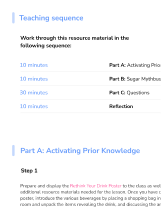Lesson Summary
This activity has been developed to give children the opportunity to investigate plants in more detail. Younger children explore a range of plants according to how they look, feel and smell. Older children begin to think about how the characteristics of the plants could influence the names they are given. They are asked to ‘rename’ plants according to their physical appearances and to invent their own plant based on what they have observed about plant features and characteristics.
This activity is designed to help connect children to the wonders of the natural world through sensory and play-based learning.
Activity Intention:
- This activity is designed to help connect children to the wonders of the natural world through sensory and play-based learning.
Lesson guides and printables
Lesson details
Curriculum Mapping
EYLF Learning Outcomes:
Learning Outcome 2: Children are connected with and contribute to their world
2.3 Children become aware of fairness
Learning Outcome 4: Children are confident and involved learners
4.1 Children develop dispositions for learning such as curiosity, cooperation, confidence, creativity, commitment, enthusiasm, persistence, imagination and reflexivity
4.2 Children develop a range of skills and processes such as problem solving, inquiry, experimentation, hypothesising, researching and investigating
4.3 Children transfer and adapt what they have learned from one context to another
Resources Required
- Plant materials - collect a range of different plant materials with different textures, shapes, colours and smells. Consider including leaves, nuts and seeds (sealing in a tub if small), flowers, roots, bark, etc.
Supporting resources:
Other resources:
- Cool Australia Biodiversity Digital Library
- Forests Factsheet
- Cool Australia Biodiversity video (see below)
Additional Info
Cool Australia Presents Biodiversity on Vimeo (https://vimeo.com/77933476).


Welcome back!
Don't have an account yet?
Log in with:
Create your free Cool.org account.
Many of our resources are free, with an option to upgrade to Cool+ for premium content.
Already have an account?
Sign up with:
By signing up you accept Cool.org's Terms and Conditions(Opens in new tab) and Privacy Policy(Opens in new tab).